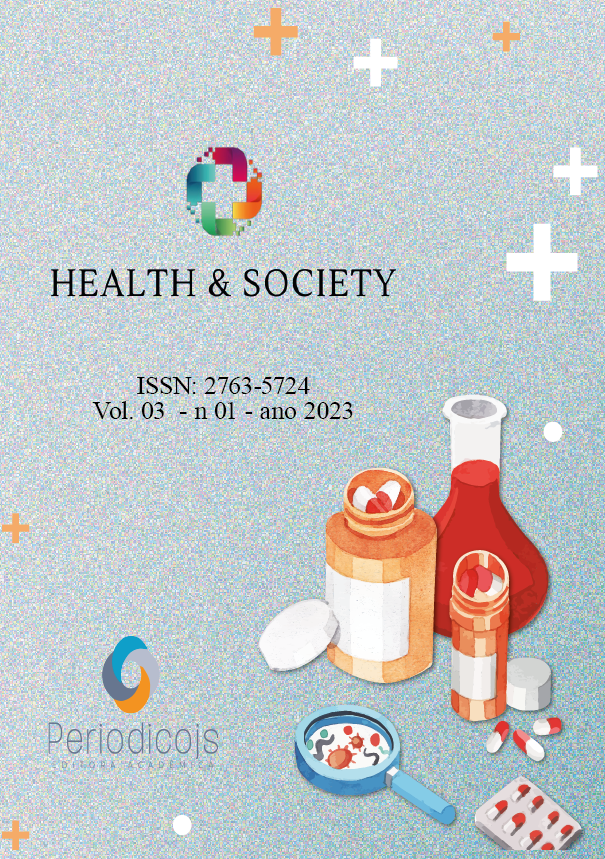Resumo
The use of injectable hyaluronic acid (HA) fillers has become increasingly widespread in facial contouring and rejuvenation. We report our experiences to emphasize the role of HA fillers as tools in addition to aesthetic treatments in cases of post-surgical facial sequelae. HA fillers are generally used for aesthetic rejuvenation, but a new potential horizon could be their application in traumatic, reconstructive and craniofacial surgeries. This study was carried out retrospectively through a bibliographic survey of books, public health manuals and scientific articles in Portuguese and English published in the databases of VHL (Virtual Health Library), SciELO (Scientific Electronic Library Online) and PUBMED. The search for references was developed by looking for publications referring to the period of the last 10 years. Visual analogue scale (VAS) assessment was performed to assess patient satisfaction. No major complications (ie impending necrosis or visual loss) were reported. Bruising and swelling have been reported for 48 hours after lip injection. In the immediate VAS assessment, 67% of the patients were “extremely satisfied” and 33% “satisfied”. In those 33%, VAS scores changed to “extremely satisfied” at 6–9 weeks and 3–6 months of VAS assessment (contextually for improvement in flexibility, elasticity, and aesthetic appearance of the tissue). The results indicate that this minimally invasive approach achieves a high level of aesthetic enhancement, improving patient satisfaction. The concept of HA filler applications may be a frontier that may be applicable to other areas of reconstructive facial plastic surgery.
Referências
ALBERTS, B.et al. A biologia molecular da célula Junções celulares, adesão celular e a matriz extracelular 1065. Nova York: Garland Science, 2013.
CHIRICO, F. et al. Injeção Bifásica para Redução do Músculo Masseter com Toxina Botulínica. Appl. ciência 2021.
CLAUSER, L. et al. Enxerto de Gordura Estrutural em Cirurgia Reconstrutiva Complexa. J. Craniofac. Cirurg. 2013.
DEMPSEY, R. F. e outros Craniossinostose não sindrômica. Clin. Plástico. Cirurg. 2019.
ECCLESTON, D.; MURPHY, D.K. Juvederm VOLBELLA na área peri-oral: um estudo prospectivo, multicêntrico, aberto de 12 meses. Clin. Cosmet. Investigar. Dermatol. 2013.
FALLACARA, A. et al. Preenchimentos de Ácido Hialurônico na Regeneração de Tecidos Moles. Plástico Facial. Cirurg. 2017.
FRANCHI, G. Injeções Faciais de Preenchimentos à Base de Ácido Hialurônico para Malformações. Estudo preliminar sobre melhoria do tecido cicatricial e melhoria cosmética. Ana. Quir. Plástico. Estética, 2018.
GONZÁLEZ, N.; GOLDBERG, D. J. Atualização no Tratamento de Cicatrizes. J. Drugs Dermatol. 2019.
HEE, C.K. e outros Propriedades reológicas e características de desempenho in vivo de preenchimentos de tecidos moles. Dermatol. Cirurg. 2015.
JONES, D.H. Preenchimentos Injetáveis Semipermanentes e Permanentes. Dermatol. Clin. 2013.
KAJDIC, N.; SPAZZAPAN, P.; VELNAR, T. Craniossinostose - Reconhecimento, Características Clínicas e Tratamento. Bosn. J. Medicina Básica. ciência 2018.
MAAS, CS. O novo paradigma no rejuvenescimento facial: preenchimentos de tecidos moles 2015. Facial Plast Surg Clin North Am, 2015.
MASHIKO, T. et al. Volumização semipermanente por um preenchedor absorvível: técnica de injeção Onlay no osso. Plástico. Reconstr. Cirurg. Glob. Aberto 2013.
MICHEELS, P. et al. Efeito de diferentes tecnologias de reticulação no comportamento do ácido hialurônico: um estudo visual e microscópico de sete géis de ácido hialurônico. J Drugs Dermatol, 2016.
PIERRE, S.; LIEW, S.; BERNARDIN, A. Noções básicas de reologia de preenchimento dérmico. Dermatol. Cirurg. 2015.
RAHMAN, E. et al. Uso de ácido hialurônico para preenchimento de partes moles para correção de assimetria labial congênita e pós-traumática. J. Cutan. Cirurgiã Estética. 2017.
RAUSO, R. et al. Injeções de ácido hialurônico como alternativa não cirúrgica em caso de diagnóstico tardio de fratura do arco malar: relato de caso e revisão da literatura. Caso Rep. Surg. 2019.
SAHAN, A.; TAMER, F. Restaurando a simetria facial através de procedimentos estéticos não cirúrgicos após paralisia facial permanente: relato de caso. Acta Dermatovenerol. Alpes. Panonica Adriat, 2017.
SALTI, G.; FUNDARÒ, S.P. Avaliação das Propriedades Reológicas e Físico-químicas de uma Nova Gama de Preenchimentos de Ácido Hialurónico com Tecnologia eXcellent Three-Dimensional Reticulation (XTR™). Polímeros 2020.
SALTI, G.; RAUSO, R. Rejuvenescimento facial com preenchedores: A técnica de plano duplo. J. Cutan. Cirurgiã Estética. 2015.
SUNDARAM, H.; CASSUTO, D. Características biofísicas dos preenchedores de tecidos moles com ácido hialurônico e sua relevância para aplicações estéticas. Plast Reconstr Surg. 2013.
ZERBINATI, N. et al. Avaliação In Vitro da Biossegurança do Ácido Hialurônico PEG Reticulado com Micromoléculas de Hidroxiapatita de Cálcio em Baixa Concentração. Acesso aberto Maced. J. Med. ciência 2018.

Este trabalho está licenciado sob uma licença Creative Commons Attribution 4.0 International License.
Copyright (c) 2023 Daniel Dias Machado





